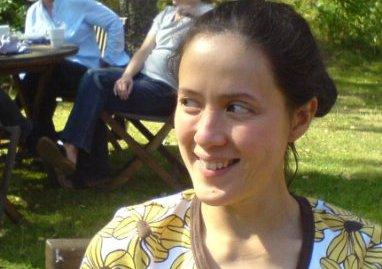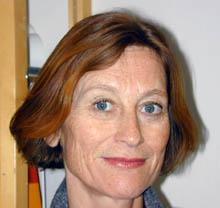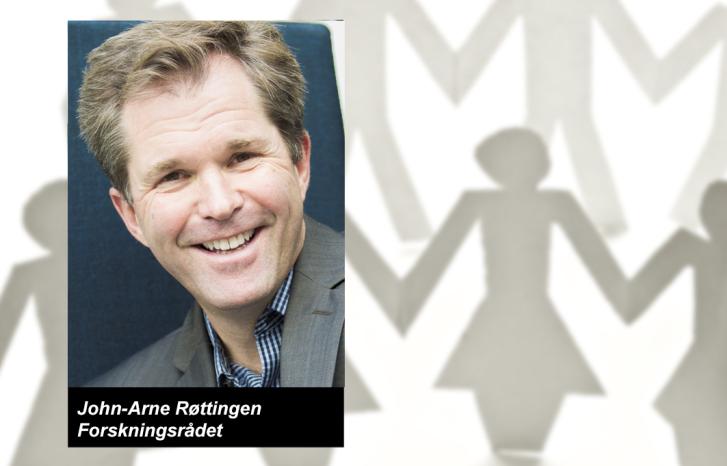
“When we engage with other disciplines, we are forced to question our own perspectives and methods. In our experience, it is by no means easy to be tolerant and open, but it is absolutely worth it.”
This is according to Anita Hussenius, coordinator for the Programme of Excellence GenNa at the Centre for Gender Research at Uppsala University. Since its inception in 2003, the centre has aimed to transcend traditional disciplinary boundaries and serve as a meeting place for researchers and students from a wide variety of academic backgrounds.
GenNa was established in 2007 with funding from the Swedish Research Council. At GenNa, researchers from the social sciences, humanities and natural sciences study gender and gender-related knowledge that is produced at the interface between research on nature, culture and society.
And they are doing so with great success, according to Hussenius.
“GenNa has made it possible to launch several exciting projects in which researchers cooperate across disciplines on research questions we would never have asked in our respective academic circles,” says Hussenius.
As one example of this, she points to a new cooperative effort between brain researchers, anthropologists, historians, philosophers, psychologists and sociologists on the topic of studies of the gendered brain.
“This type of interdisciplinary gender perspective on our understanding of the brain and gender differences is impossible within traditional brain research. New knowledge about the brain and its plasticity also gives gender research deeper insight into fundamental concepts such as gender and gender differences,” says Hussenius.
Tools for questioning
A critical gender perspective on natural science is a common thread that runs through many of GenNas’ projects.
“The natural sciences are generally considered to be objective and verifiable, and for this reason many people believe that a critical gender perspective is not relevant for this type of knowledge. Our interdisciplinary projects on topics such as physics, the body, natural science education and animals has shown that perspectives from gender research definitely have something to contribute to natural science,” says Hussenius.
Evolutionary biologist Malin Ah-King, one of the natural scientists who has been affiliated with GenNa, says that her encounter with perspectives from gender research has been highly beneficial.

“Instead of taking for granted what gender entails, as we do in biology, gender theory gives us tools to ask: What intrinsic assumptions underpin biology’s understanding of gender? What cultural perceptions influence how we understand gender in biology? The historical aspects are also just as important as the theoretical: What can we learn from how the scientific insights have developed in line with historical changes?”
Focus on variation and change
Ah-King believes that a critical gender perspective has also made her as a biologist more aware of what falls outside of the patterns.
“Biologists tend to describe behaviour in terms of what is usual for females and males, whereas phenomena that fall outside of the two-gendered, heterosexual norm are called ‘alternative’ and described as exceptions. But if we look closely, we find enormous variation when it comes to gender in nature. The only thing that males and females have in common is that they produce sperm and eggs, respectively. All other characteristics vary and undergo change. This is something all biologists know, but we still tend to describe gender according to stereotypical patterns,” says Ah-King, who adds that not only gender theory but also queer theory has been useful for her understanding of biological gender.
“There are species that, through evolution, have acquired the ability to change gender because this has been beneficial for the individuals. When I challenged the notion that biological gender is static by pointing out all the variation found in nature, my colleagues at GenNa said ‘That is queer research!”. And the queer theorists’ deconstruction and focus on variation, not only with regard to gender but also sexuality, have served as useful tools for me,” says Ah-King.
Hussenius and Ah-King clearly agree that natural science needs gender research. But what about the other way around? Does gender research need natural science?
“Yes, absolutely. Many social scientists have a stereotyped perception of biological knowledge as something that lies outside of their field, something that is static and given, without relevance for their research. I am interested in showing that it is not so static. It is also important to understand biology because it has an enormous impact on society, political debates and legislation,” says Ah-King, and adds:
“Having said that, I have found the gender researchers at Uppsala to be very positive and interested in what I have to offer.”
She also sees political arguments for why gender researchers should be familiar with biological research.
“Biology can be an effective tool for looking critically at some of the stereotypical research on gender and the way this is depicted in the media.”
Evolutionary psychology is a good example. Some research in this area has been based on an outdated, stereotyped version of evolutionary biology without taking into account new biological knowledge on topics such as sexual selection, she explains.
Openness – not consensus
Sociologist Tora Holmberg has also benefited greatly from her encounter with natural science perspectives. Under the auspices of GenNa she has conducted research on the relationship between animals and humans, including how our ideas about heredity and environment influence our understanding of certain breeds of dogs and their owners.

“There is no doubt that alliances across disciplinary boundaries enhance understanding. It makes us aware of the unquestioned, normative aspects of our own perspectives. We learn to be a bit more humble about our own knowledge and aware of its limits. By the same token: Trying to understand each other is not the same as reaching a consensus. This is not about convincing each other or agreeing,” says Holmberg.
In the past Holmberg has conducted research on interdisciplinary debates about gender. She maintains that not all these debates are equally productive.
“In the general debates, natural scientists and social scientists very often talk at cross purposes. Different points of departure, concepts and interests limit the usefulness of the exchange,” says Holmberg, who believes that productive interdisciplinary alliances require a common approach in one form or another. In this regard GenNa has been an important catalyst,” she believes, and cites the NeuroGenderings conference arranged in Uppsala a few weeks ago by the same researcher network mentioned by Hussenius as one example.
“At the conference, scientists from many different disciplines met to discuss the possibilities and limitations of brain research from a feministic perspective. The desire for more firmly grounded knowledge, feminist or queer, provides a good starting point for a productive alliance,” says Holmberg.
Something for Norway?
Norwegian gender research has not yet established a centre like GenNa, but there is definitely interest in an interdisciplinary collaboration that includes natural scientists, according to Merete Lie, a professor of gender studies in the Department of Interdisciplinary Studies of Culture at the Norwegian University of Science and Technology (NTNU). In 2007 she applied for funding for an interdisciplinary project designed in part to investigate the significance of new biological knowledge for theories about gender.
The project was not awarded funding, but Lie is hoping for new opportunities. She has also pursued her interest in natural science through other research, including a study of images of cells from the human body and reproduction technology. She believes that interdisciplinary dialogue would undoubtedly give a boost to gender research.

“Many gender researchers are not aware of how much some areas of the natural sciences have changed in recent years. At the same time, it would be wrong to say that the field of gender research has completely ignored natural science. There are several of us who have been interested in this area, and at NTNU we have had interdisciplinary cooperation with natural scientists and medical researchers for many years,” explains Lie, who wants to toss the ball back into the natural scientists’ court.
“There is definitely room for more interest on both sides. Why is there so little interest in critical research on gender among natural scientists? For instance, I have run across medical researchers who believe that I as a gender researcher study reproductive organs,” says Lie.
She agrees with Tora Holmberg that a common focus and interest are essential for productive cooperation across disciplines, but she does not think this shared platform must be feminism or a critical gender perspective.
“In my experience, a common interest in an empirical field which researchers approach from different angles can also be a good starting point,” says Lie.
Translated by Connie Stultz
The Programme of Excellence GenNa was established at the Centre for Gender Research at Uppsala University in 2007 with funding from the Swedish Research Council.
At GenNa, researchers from the social sciences, humanities and natural sciences study together gender and gender-related knowledge that is produced at the interface between research on nature, culture and society.



